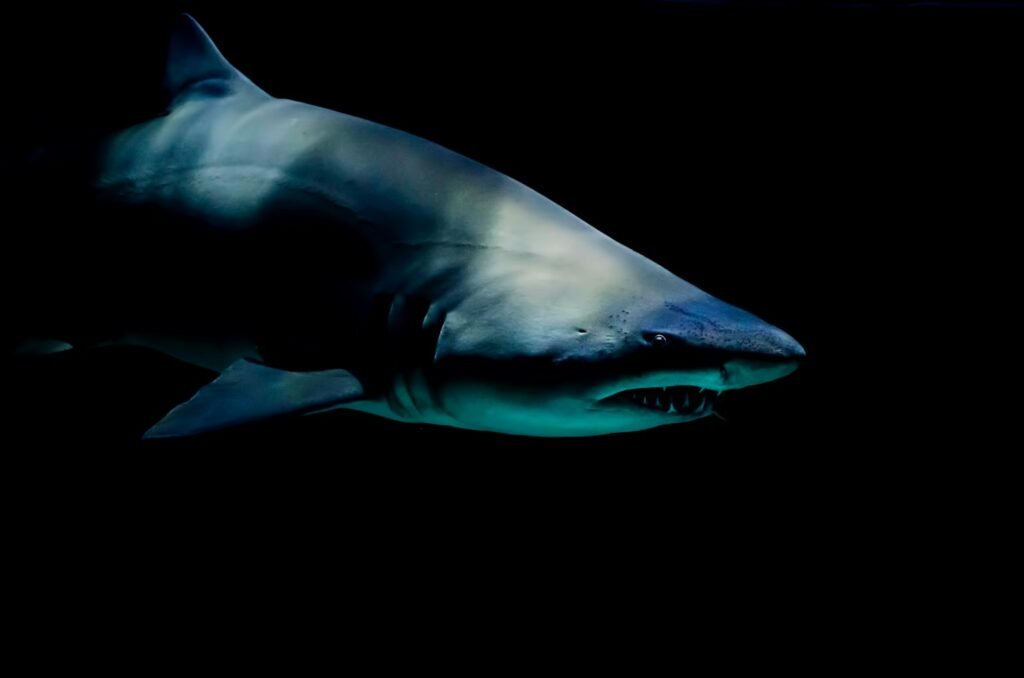For decades, sharks were seen as silent hunters. A groundbreaking discovery reveals they’ve been “speaking” all along and the recordings will surprise you.
Breaking the Silence: Sharks’ Unexpected Vocalization

In a major breakthrough in marine biology, researchers have, for the first time, recorded sharks intentionally producing sounds challenging the long-standing belief that these creatures are completely silent. The study, published in Royal Society Open Science, focuses on New Zealand’s rig shark (Mustelus lenticulatus), a small coastal species recognized for its flat, crab-crushing teeth.
This discovery happened by chance. In 2021, lead researcher Dr. Carolin Nieder was studying how sharks hear when she noticed unusual clicking sounds during routine handling. “I always believed sharks didn’t make sounds,” Nieder told ABC News. “At first, we assumed there was an issue with the equipment until we realized the clicking stopped once the sharks got used to being handled.”
The Sound of Shark “Speech”

The clicks, described as resembling “electric sparks” or “balloons popping,” are not quiet whispers. These short bursts are 156 decibels louder than a handgun and last only 48 milliseconds, but they cover frequencies ranging from 2.4 to 18.5 kHz, some of which are audible to humans 49.
How do they do this? Sharks lack the swim bladder that bony fish use to make noise. Instead, researchers believe the rig’s flattened teeth snap together forcefully, resulting in a percussive click. “It’s like a biological castanet,” said Neil Hammerschlag, an Atlantic Shark Expeditions representative who was not involved in the research. “If confirmed, this would redefine how we view shark anatomy” 47.
A Distress Signal or Secret Language?

Why would a shark “talk”? The study reveals clues:
- Stress response: Sharks clicked most frequently in the first 10 seconds of handling, suggesting a startle reaction. “It’s like a scream underwater,” said Nieder 29.
- Predator deterrence: At 156 dB, the noise could disorient attacking whales or larger sharks.
- Mystery function: Intriguingly, 5% of clicks occurred without movement, hinting at intentional use 8.
One theory even suggests rigs mimic snapping shrimp—their prey—to lure them out of hiding. “It’s speculative, but evolution loves a good trick,” said Scott Tindale, a marine researcher who reported wild rig clicks years before the study 6.
Rewriting Marine Biology Textbooks

This discovery isn’t just about rigs. Sharks and rays diverged over 200 million years ago, yet both groups now show sound-producing abilities. In 2022, stingrays were documented clicking at divers, and Mediterranean skates joined the chorus soon after. “This could be an ancient survival tool,” said Dennis Higgs, a marine biologist unaffiliated with the study. “We’ve underestimated elasmobranchs for centuries” 16. The implications extend to ecology and conservation. If sharks rely on sound to navigate threats, ocean noise pollution from ships or drilling may disrupt critical behaviors. “It’s a wake-up call,” Hammerschlag stated. “We need to listen harder” 7.
What’s Next in Shark Acoustics?

The team plans to:
- Test the teeth-snapping hypothesis with high-speed cameras.
- Record rigs in the wild to see if clicks occur naturally.
- Investigate other sharks, like the common smoothhound, which may share similar traits 79.
Nieder remains cautious but excited: “This is just the click of the iceberg. Imagine what else we’ll hear when we start listening” 2.
Listen to the Shark Clicks Yourself
Curious how a 156 dB shark “voice” sounds? Watch the groundbreaking recordings from the Leigh Marine Laboratory.

Suhail Ahmed is a passionate digital professional and nature enthusiast with over 8 years of experience in content strategy, SEO, web development, and digital operations. Alongside his freelance journey, Suhail actively contributes to nature and wildlife platforms like Discover Wildlife, where he channels his curiosity for the planet into engaging, educational storytelling.
With a strong background in managing digital ecosystems — from ecommerce stores and WordPress websites to social media and automation — Suhail merges technical precision with creative insight. His content reflects a rare balance: SEO-friendly yet deeply human, data-informed yet emotionally resonant.
Driven by a love for discovery and storytelling, Suhail believes in using digital platforms to amplify causes that matter — especially those protecting Earth’s biodiversity and inspiring sustainable living. Whether he’s managing online projects or crafting wildlife content, his goal remains the same: to inform, inspire, and leave a positive digital footprint.




